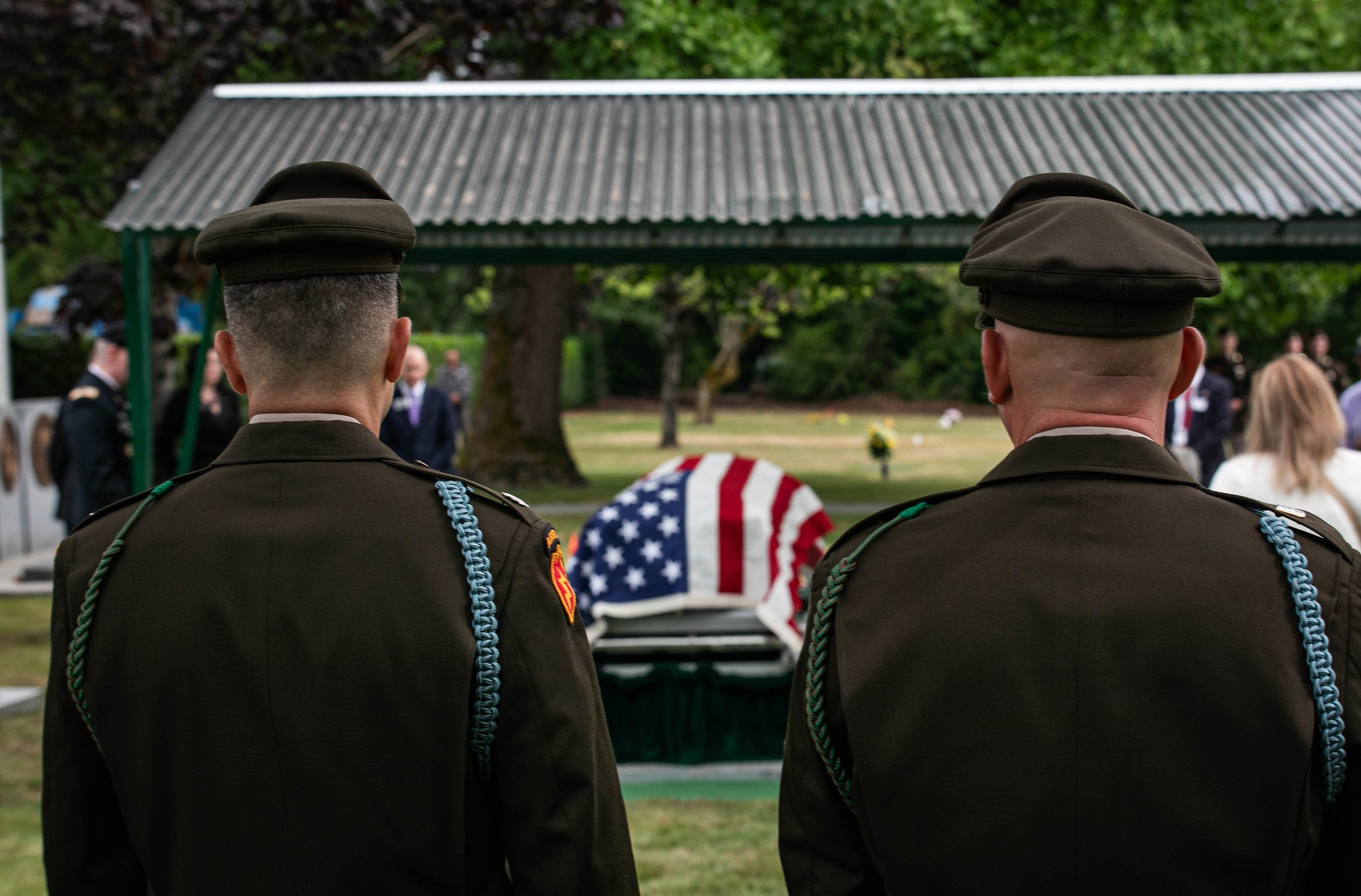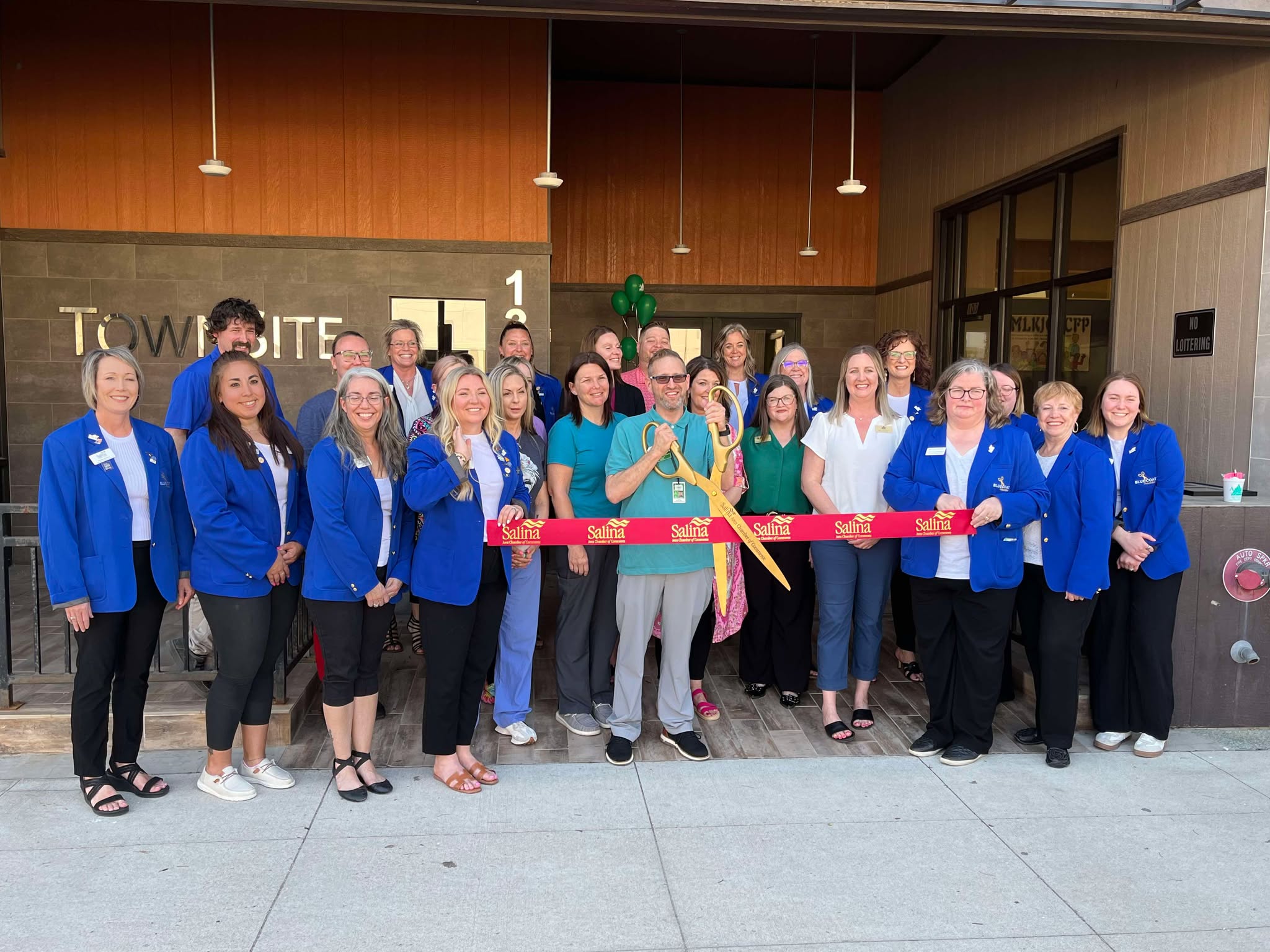The remains of a Fort Riley soldier killed during the First World War have been returned back to his home for proper burial and honors.
According to the Army, by most accounts the Aisne-Marne offensive, known as the Second Battle of the Marne which occurred during the summer of 1918, was an intimate and brutal affair.
A proving ground for modern machines of war, the battles fought during the First World War were unlike any experienced before. Arduous stalemates of trench warfare, amplified by the use of machine guns, armored vehicles and gas attacks, ushered in the modern era of combat. Close quarters fighting occurred often and was conducted with grenades, rifles and bayonets.
In a firsthand account of the engagement, Raymond Thompkins, who during the offensive was serving in the 42nd Infantry Division, known as the “Rainbow Division” because of their shoulder sleeve insignia, remembered how, “[t]he Germans had blown up two bridges near Sergy; the stream was swollen with rains to a width of fourteen meters and a depth of four, and the men had to struggle through the little torrent.”
“Machine guns opened on them from Sergy directly in front of Meurcy Farm on the flank and the stream ran red with the blood of the Rainbow.”
What began on July 16, 1918, the Aisne-Marne offensive would last for nearly a month and would involve over one hundred thousand Soldiers from across the United States, England, France, Italy, Russia, Siam and Germany. Many of those involved would never see their homes again.
Three days after the offensive began U.S. Army Pfc. Charles McAllister of Seattle, Washington, who at the time was serving with I Company, 3rd Battalion, 26th Infantry Regiment, 1st Infantry Division, of the American Expeditionary Force in France, was reported missing in action. He was twenty-three.
According to the U.S. Census Bureau the total number of casualties during WWI reached 876,084, of those, 161,046 were cataloged as missing in action, presumed dead.
“Sometimes, because of the nature of war, it is impossible to be able to recover a comrade at that point, but that doesn’t mean we stop trying,” said Sean Everett, a spokesperson for the Defense POW/MIA Accounting Agency (DPAA).
In 2002, nearly 100 years later, a French archaeological team found the remains of two people near the town of Ploisy, a few miles southeast of Soissons, France. Later that year, when the remains were sent back to the U.S., the long and meticulous process of identification began.
“When an American service member raises their right hand and swears to protect and defend the Constitution of the United States of America the country also makes a promise to them,” said Everett.
The DPAA, in a partnership with the Armed Forces Medical Examiner System out of Dover Air Force Base in Delaware, facilitated McAllister’s remains through multiple outlets as attempts were made to identify living relatives. Together they made substantial findings through a process using information gathered from circumstantial evidence and forensic analysis of the remains.
In 2005, the first set of remains were identified. They belonged to Pvt. Francis Lupo, of Cincinnati, Ohio, who was killed in action on July 21, 1918, while serving in the 1st Battalion, 18th Infantry Regiment, 1st Inf. Div., during the Second Battle of the Marne. Because of the nature of conducting forensic analysis on subjects from such a long time ago, the identification of McAllister’s remains proved more difficult.
To make a finding in forensic analysis, scientists are limited to specific types of DNA that run through only a particular set of surviving family members. Because certain DNA only runs through the maternal line while other DNA only runs through the paternal line it is often difficult to find the right family members with the right lineage that will make a positive genealogical match.
In McAllister’s case, with help from the Washington State National Guard, sufficient anthropological, dental and circumstantial evidence was obtained. Using this evidence, the DPAA and the Armed Forces Medical Examiner System were able to make positive mitochondrial and nuclear DNA matches.
“When the two sets of remains were found we did everything we could to finally find a way to be able to identify McAllister,” said Everett. “All of that is part of that promise the country makes to the service member when they join the military; that is to never leave them behind. It’s also a promise that is made to the family.”
McAllister’s remains were officially identified on April 15, 2024, exactly 105 years, eight months and 27 days after he was reported missing. Soon after, he was sent home to Washington.
“It was great that we were able to finally get him home,” said Kevin McAllister, a relative of Charles.
Over a hundred years ago Soldiers of the Big Red One were sent to France to fight in a war that enveloped the world. The actions of those individuals together established the United States as a pivotal player on the world stage.
It is ingrained within every American Soldier to never leave a fallen comrade behind. The Warrior Ethos, a short stanza required to be memorized by all U.S. Soldiers upon entering the Army, states that no matter what, someone will always come get you and bring you home. For U.S. Soldiers the interment of Pfc. Charles McAllister was a sobering experience, one that exemplified the ultimate promise made by military members and the country they serve.
Pfc. Charles McAllister was buried in Acacia Memorial Park and Funeral Home with full military honors in Seattle, Washington, on Aug. 21, 2024.
When his remains were finally returned to his hometown of Seattle, a service, honoring the sacrifices made by all those who willingly volunteered to serve and fight a nation’s wars, was conducted.
“Big Red One Soldiers come from many walks of life, various beliefs and backgrounds to serve a cause that is not their own.,” said Lt. Col. Thomas Sacchieri, commander of the 1st Battalion, 16th Infantry Regiment, 1st Armored Brigade Combat Team, 1st Inf. Div. “They have a clear purpose and a sense of belonging to a team. The Soldiers of the 1st Inf. Div. are fit—physically, mentally and spiritually. They are led by inspiring leaders. They are disciplined, trained and ready to answer the call. And just like Pfc. McAllister, they reflect the character of our nation.”
“I am glad that we were able to get [McAllister],” said Command Sgt. Maj. Lane Dochterman, command sergeant major of the 1-16 Inf. Regt., 1st ABCT, 1st Inf. Div. “There are still a lot of missing
Soldiers and I hope we get to bring them all home.”
Estimates suggest that from the Second World War to the present day over 82,000 Americans are missing from past wars and conflicts. Around 72,000 of those are reported to have gone missing during WWII, approximately 7,000 were lost during the Korean War and another 1,500 who fought and died in Vietnam.
“It’s very important that we link the sacrifices and the legacy of the Soldiers in the division that came before us to the Soldiers that are currently serving,” said Sacchieri. “A lot of them served for the same reasons. It’s important for us to continually remember that.”
A group of surviving family members, active-duty service members and veterans witnessed and paid homage as the casket containing McAllister’s remains was finally lowered and he was at last laid to rest.
“Probably half the people [here] we’ve never even met before and they’re family members that live as close as five miles from our residency,” said Kevin McAllister. “It’s been fantastic seeing all these people. We’ve had people come from all over the state for this service so it’s been really good.”
What began as a young man’s journey to participate in one of the largest conflicts in human history did not end with the giving of his final breath in France, but over one hundred years later when his body returned to American soil as a cool wind blew and behind the cover of large gray clouds Mt. Rainier somewhere loomed in the distance.



